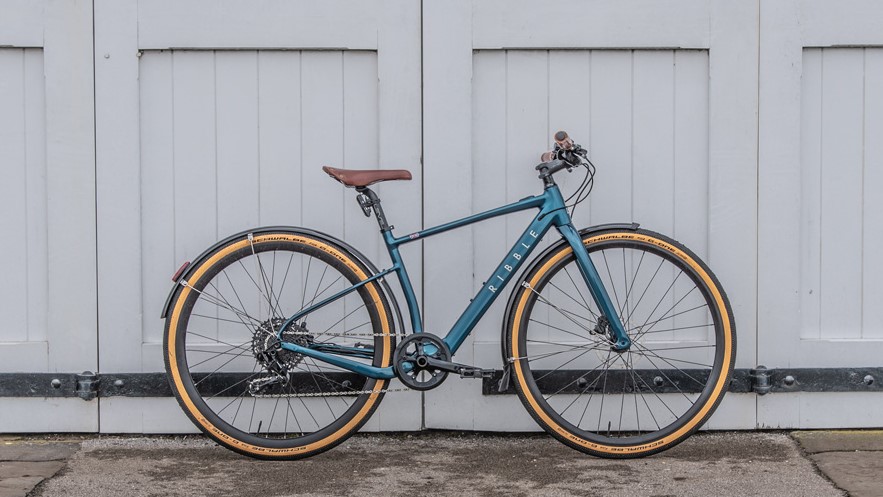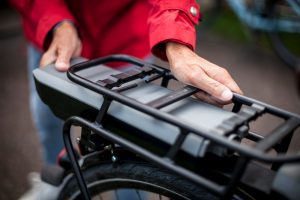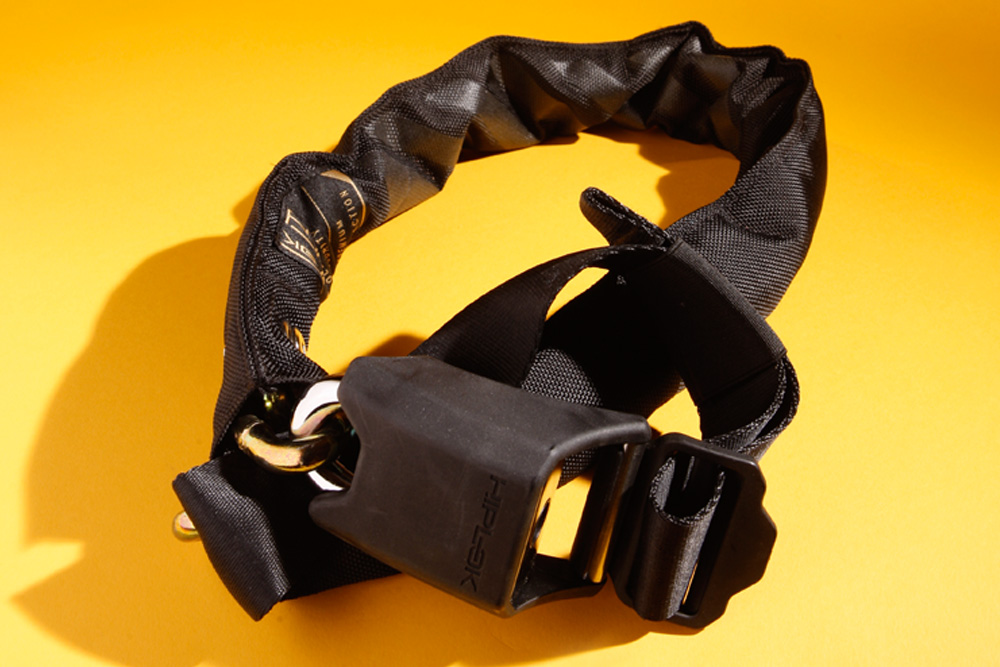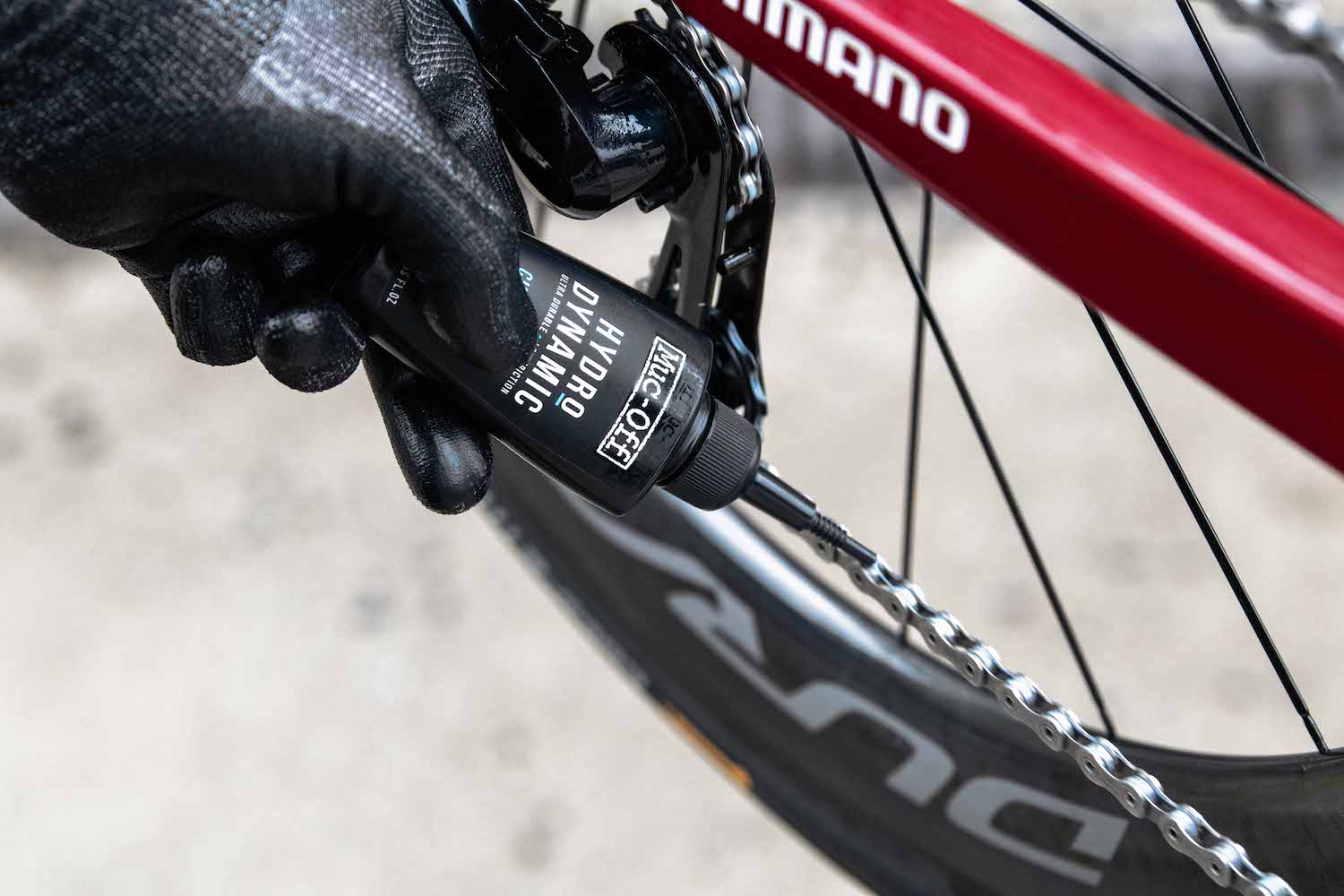How to store an e-bike
The rules for storing an electric bike are pretty simple, although there are a few dos and don'ts


If you’re riding your electric bike regularly, you’ll want to store it somewhere handy and have it ready to use, whereas if you’re not planning to ride it for a few months - maybe due to a holiday or a lay-over during the winter months - there’s a bit more you should do to make sure it’s ready to use again later.
Here’s the lowdown on e-bike storage.
Riding frequently?
For short-term storage, it’s a good idea to find somewhere dry that’s not subject to extremes of temperature. A garage or dry shed will be just fine, though there are dedicated bike storage sheds available.
Although motors and batteries are sealed units and resistant to moisture, as with any bike you may find that corrosion sets in on exposed parts if your e-bike is kept somewhere damp.

A bike storage shed is an option, provided it's cool and not damp
On all bikes, regardless of whether they are motorised or not, the chain in particular is prone to rust if it gets wet, but there’s also the chance that on an e-bike electrical terminals for cables will corrode, depending on the design of the bike. Applying a smear of conductive terminal grease will ensure that there’s a good connection when you slot a removable battery back into your bike.
Salt is a particular issue if you’re riding through winter, although no more so than with a normal bike. It’s a good idea to keep your e-bike washed and lubed and to dry it off, ideally after every ride. You should just use soap and water to wash down your e-bike. Don’t use a standard pressure washer, as it can force water into moving parts and damage seals and bearings.
Bosch recommends checking that all the electronics are working after you’ve cleaned your bike and before putting it away.
Charge up your battery
You’ll also want to recharge your e-bike’s battery. That’s something that you can do with it still installed on the bike, if you’ve got a handy power socket. If not, many e-bikes are designed so that you can remove the battery easily and take it indoors to charge it. If that’s an option, it’s a good one to take.

If you can remove your battery, it's best to store it indoors
The battery management software will ensure that your battery can’t overcharge, but it’s still a good idea to disconnect it once the charge indicator shows that it’s fully charged, rather than leaving it connected to the charger.
Whether you recharge it on or off the bike, you should keep your battery somewhere where it’s not exposed to extremes of temperature. Too high a temperature - over 40C - can degrade the battery performance and lower its capacity.
If you’re transporting your e-bike by car, try not to leave it somewhere where it can overheat.
Too low a temperature and the battery won’t deliver its charge effectively when you start out, although it will warm itself up with operation. Bosch recommends removing the battery and keeping it indoors in cold weather, slotting it back in the bike just before you set out. You can also buy a neoprene cover to help keep the battery a bit warmer as you ride.
Keep it safe
As with any bike, you’ll want to keep your e-bike somewhere secure. Any bike is attractive to thieves, but the higher value of e-bikes makes them even more so. We’ve some general advice on keeping your bike safe in this post. The basics are to have good security on your bike storage and to lock your e-bike to a ground anchor with a sturdy chain.

Lock your e-bike to a ground anchor when it's not in use
Batteries are a particularly tempting target for thieves - they’re high value and easy to steal, especially if they're removable and not locked to your bike. A replacement battery may cost several hundred pounds. It’s another reason to take your battery off your bike when it’s not in use.
Having a longer layover?
If you’re storing your e-bike longer term, again it’s recommended that you remove your battery and keep it somewhere that’s dry and not subject to extremes of temperature. You should store it without fully charging it too - Bosch recommends between 30% and 60% of its capacity and Shimano 70%. Bosch suggests that you remove the controller as well and keep it indoors.

Lubricate your chain before a longer lay-over to stop it rusting
Bosch says too that you should give your bike a light lube before you store it, paying particular attention to the chain and aluminium parts, which can corrode. You can buy a bike protection spray to help protect your bike as well. Muc-Off, for example, makes the eBike Ultra Corrosion Defence spray, which repels water and can provide up to 12 months’ protection.
A layer of protective spray will make cleaning and maintenance easier when you do start to ride your bike again as well.
Keep your tyres pumped up too and don’t let them go completely flat, as this may damage the rubber.


Thank you for reading 20 articles this month* Join now for unlimited access
Enjoy your first month for just £1 / $1 / €1
*Read 5 free articles per month without a subscription

Join now for unlimited access
Try first month for just £1 / $1 / €1
Get The Leadout Newsletter
The latest race content, interviews, features, reviews and expert buying guides, direct to your inbox!
Paul started writing for Cycling Weekly in 2015, covering cycling tech, new bikes and product testing. Since then, he’s reviewed hundreds of bikes and thousands of other pieces of cycling equipment for the magazine and the Cycling Weekly website.
He’s been cycling for a lot longer than that though and his travels by bike have taken him all around Europe and to California. He’s been riding gravel since before gravel bikes existed too, riding a cyclocross bike through the Chilterns and along the South Downs.
-
 Aero bikes with gravel wheels?: Six tech insights from Paris-Roubaix Femmes
Aero bikes with gravel wheels?: Six tech insights from Paris-Roubaix FemmesEverything we found out about tyre widths, self-inflating systems, and wheel choices from the cobbled Monument
By Tom Davidson Published
-
 'This race is absolutely disgusting': Peloton reacts to another brutal Paris-Roubaix Femmes
'This race is absolutely disgusting': Peloton reacts to another brutal Paris-Roubaix FemmesNow in its fifth edition, Paris-Roubaix Femmes is still a tough race, even for the best bike riders in the world
By Adam Becket Published